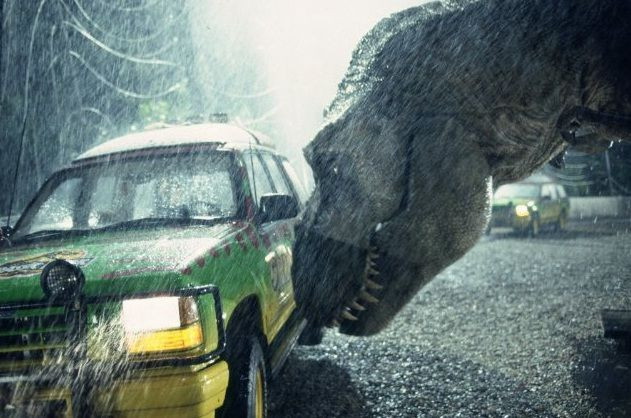Your DNA Could Live On 6.8 Million Years After You Die

In the 1990s, after watching Jurassic Park and hearing about Dolly the sheep, many children hoped that scientists would develop the capacity for cloning dinosaurs that could roam again on the Earth. (Although, after watching Jurassic Park, they should have known better). Few researchers had said that dinosaur DNA samples had survived until the present day, but no one was quite sure how long it takes for DNA to unravel. Now, researchers have figured out that DNA's lifespan is longer than we thought - but still not long enough to make dinosaur cloning possible.
After cells die, enzymes and micro-organisms work to break down the bonds of DNA. Ultimately though, what is thought to be behind most cell degradation is water. In theory, since groundwater is almost everywhere, DNA in buried bone samples should break down at a set rate.
But what was that rate? Researchers were hampered by a lack of DNA-containing fossils that they could compare. In addition, weather, temperature, oxygenation and various other environmental processes could speed up or slow down the rate of decay.
Finally, a group of multinational paleo-geneticists from Australia, China, Denmark, New Zealand and Portugal led by Morten Allentoft, at the University of Copenhagen, and Michael Bunce, at Murdoch University, analyzed the DNA from leg bones of 158 different birds. The bones belonged to three species of a now extinct giant bird called a moa and were between 600 and 8,000 years old. Because all of the bones were recovered within five miles of one another, they all were preserved in nearly identical conditions of 13 degrees Celsius or 55 degrees Fahrenheit. The researchers compared the bones' ages with the amount of DNA degradation.
Researchers calculated that DNA has a half-life of 521 years. That means that, after 521 years, half the original DNA will be gone, and 521 years after that, half of that half will have broken down too, and so on. Even for a bone preserved in perfect conditions and -5 degrees Celsius (23 degrees Fahrenheit), DNA would live for a maximum of 6.8 million years, though the DNA will be essentially unreadable after 1.5 million years. At that point, the DNA strands would become too short to be useful.
While 6.8 million years may seem like a long time, it still comes far too short to match the age of the youngest dinosaur bone at 65 million years. However, the oldest DNA sequence has been 1 million years old, so researchers could potentially break that record. And the researchers' findings could be different in other weather conditions, like permafrost.
Researchers also found that age accounted for less than 39 percent of the differences between the bones. Other conditions, they said, were in play, like storage after their discoveries, soil chemistry and even the time of year in which the animals died.
Still, Simon Ho, a computational evolutionary biologist at the University of Sydney who was unaffiliated with the study, says, "This confirms the widely held suspicion that claims of DNA from dinosaurs and ancient insects trapped in amber are incorrect."
The study was published in Proceedings of the Royal Society B.



























